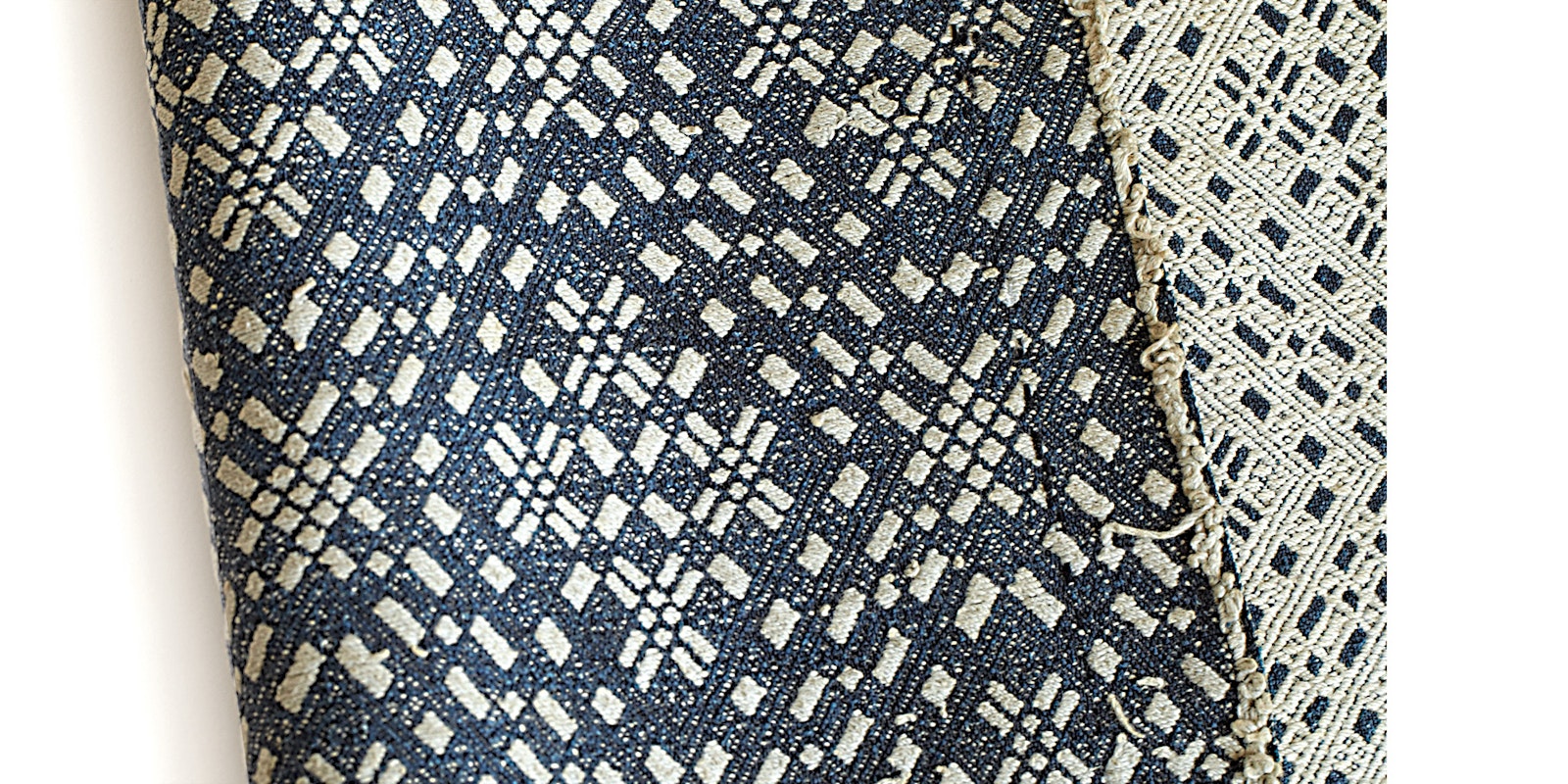In the Aomori prefecture, located at the northern tip of the island of Honshu, Japan, sashiko patterns are made with two special stitches—Kogin and Hishi. Kogin was made in the west of Aomori, Hishi in the eastern area. The basic motifs were inspired from familiar things, for example cat’s eye, walnut shell, dragonfly, fish scale, gourd, and pheasant’s foot.
Sashiko is one of the traditional handcrafts of Japan. The technique is one developed by people who lived in the northern areas of Japan, where, as you know, it is very cold in winter, because they couldn’t get warm and needed protective clothing.
The materials traditionally used for Japanese clothes were cotton, linen, and silk. Only the upper class and the wealthy wore clothes made of silk or fine linen. Common people wore garments made from cotton and coarse linen fabric.
As cotton plants didn’t grow in the northern Aomori prefecture, people there didn’t weave with cotton. Coarse linen was the only material available, but coarse linen fabric was not suitable for garments because the cloth did not protect from the cold wind. As a consequence, women came up with the idea of filling in the open spaces of the fabric with threads.
 Detail of Kogin stitch. Collection of the Yamagata Prefectural Museum
Detail of Kogin stitch. Collection of the Yamagata Prefectural Museum
With Kogin stitch, the patterns are symmetrical and made with an odd number, so the length of patterns of one row is one stitch shorter or longer than the previous row. As a result, Kogin-stitch patterns are square or diamond shaped. On the other hand, Hishi stitch is two stitches shorter or longer than on the previous row. As a result, Hishi-stitch patterns are lozenge shaped. There is another difference between Kogin and Hishi stitches: Kogin patterns for garments incorporated a variety of large motifs; Hishi patterns consisted of repetitions of a few motifs. Kogin was used mainly for the body of jackets.
Making sashiko was a big project for young women before they married. They had to make sashiko not only for themselves but also for their future husband and his parents. A bride made cloth covered with Kogin stitches rather than particular garments as she didn’t know the correct size for her future husband or his parents. After her wedding, she would construct jackets for them from the cloth. Making the Kogin cloth was very time consuming; women worked on the cloth by the fire before going to bed or between chores during the day.
Hishi stitch was used mainly for trousers. Sometimes the garments were made with used cotton towel as a liner. The people of this area were once poor farmers, so they weren’t able to dye the fabric the traditional deep blue, only a pale blue. The women compensated for this by using white and deep blue thread for the Hishi stitches, so the trousers looked like they had white and deep blue wide stripes.
 Trousers worked with Hishi stitch. Collection of the Yamagata Prefectural Museum.
Trousers worked with Hishi stitch. Collection of the Yamagata Prefectural Museum.
About 140 years ago, wool yarn became accessible. Women in this area then started to make Hishi-stitch aprons with colorful wool yarn. Now, when speaking of Hishi stitch, Japanese people associate it with these aprons.
 Hishi-stitch apron made with colorful wool yarn. Collection of the Amuse Museum
Hishi-stitch apron made with colorful wool yarn. Collection of the Amuse Museum
Today, people don’t need sashiko clothes to protect them from a harsh climate, but Hishi and Kogin stitches have been handed down to not only needlework designers but also to young people. So the essence of sashiko continues.
Interested in reading about more ways to use cotton? This article and others can be found in the July/August 2015 issue of PieceWork.
Also, remember that if you are an active subscriber to PieceWork magazine, you have unlimited access to previous issues, including July/August 2015. See our help center for the step-by-step process on how to access them.
Akiyo Murono studied philosophy and history of art in college. A designer, editor, and author, she lives in Tokyo. Her book, Hayashi Kotomi no Sashiko Noto, was published by Chikumashobo in 2014.

